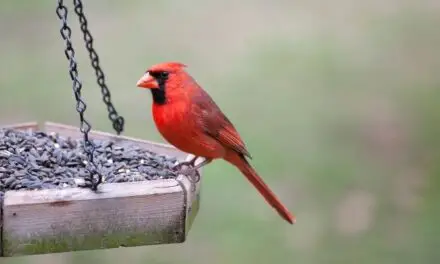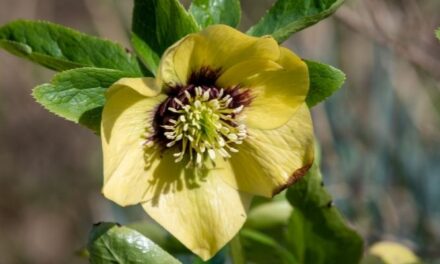If you are planting a new wisteria, you will have to think carefully about how far the adult plant will climb and where it will be when it is ready to flower.
Table of Contents
Will Wisteria Flower In Shade?

Wisteria will flower the most in full sun; it will flower less in partial shade and it probably won’t flower at all in deep shade.
These vines prefer sunny spots, and you will need to grow them on a trellis or up a wall to help them to reach as much light as possible.
With their beautiful, trailing tendrils, you will want to maximize their growth and get as many flowers as they will give.
When Will Wisteria Flower?
Depending slightly on your climate, you should expect to see them flowering between late spring and mid-summer.
If the weather is warm and you get a lot of sun, you might see buds a little earlier, but if you have a cold spring, your wisteria may not flower until late.
If your wisteria is particularly happy, it may even flower a second time in the year.
In late August, you might see a second flush of flowers, although it is usually less vigorous than the first.
If your wisteria grows in the shade, it’s less likely to get this second round of flowers.
How To Encourage Wisteria To Flower
To encourage your wisteria to flower you’ll need to provide it moist, fertile, draining soil and lots of light.
Related Article: Can A Flower Bloom In A Dark Room?
Use Fertile Soil
Wisteria will grow in most types of soil as long as it is moist, fertile, and well-drained.
If you don’t think your soil is fertile enough you can add a fertilizer that is high in phosphate to promote flowering.
Amending soil with garden compost and mulching using organic material also helps to maintain a good soil quality for your wisteria.
Provide Enough Sunlight
Wisteria is a sun-loving vine and won’t flower in anything less than full sun or light shade.
Don’t Water Too Much
Keep an eye on your wisteria for when they are not getting enough rain.
To avoid overwatering, test with your finger and only give them water when the top couple of inches of soil is dry.
Shock Your Wisteria
These vines can be tricked into flowering by being shocked.
One of the safest ways to shock this plant is to hold back on watering and allow in a period of drought.
How Tall Does Wisteria Grow?
You might be wondering how high up your wisteria is going to grow, and where you need to be looking in terms of minimizing shade.
A healthy wisteria can grow up to 9 feet high, which may bring it clear of a lot of your smaller plants and other things that cast shade.
When choosing a trellis, you will need to choose a good, sturdy one that is high enough to offer the plant plenty of support.
Try to maximize the light that it will get by placing the trellis on a wall with minimal shade and cutting away tree branches or other things that might block the sun.
The more light you can give your wisteria, the more flowers you should see as a result!
You may not need to worry about your wisteria being shaded low down on the stems, but toward the top of the plant, it will want plenty of sunshine so that it can produce lots of buds and flowers.
Wisterias almost can’t get enough sunlight!
What Else Stops Wisteria From Flowering?
If your wisteria gets full sun for most of the day, you might be wondering what else could be preventing it from flowering well.
Sadly, there are some other common problems that could reduce the number of blooms.
Rich Soil
The soil being too fertile, perhaps surprisingly, can stop a wisteria from flowering well.
They don’t like nitrogen-rich soil or having too much food around their roots, and may grow less healthily as a result.
You may find that you never really need to feed your wisteria, especially once it is established – and if you do, you should be careful not to overdo it.
Pruning
Lack of pruning is also a common cause of wisterias not flowering.
These plants like to be cut back so that they have space and energy to produce lots of flowers.
You can prune your plant twice a year, once around January, and once around July or August.
This will help it to grow strong and produce blossoms.
If you don’t prune your wisteria, it will focus more on growing leaves than flowers, so you may just get a few buds, and mostly leaf growth.
To get flowers, you need to prune the plant hard.
Overwatering
You shouldn’t water your wisteria too much, either; they don’t like having wet feet, and can easily get waterlogged.
A waterlogged wisteria will usually still flower, but as unhealthy plants put less energy into creating blossoms, you might find that it doesn’t flower nearly as much.
Let the ground dry out a bit, and you’ll have a happier plant.
Age
Your wisteria may not be mature enough to flower yet.
These plants are slow to mature and can take 3 to 5 years before they begin to flower.
How To Control Wisteria In Your Yard
Wisteria is a very fast-growing and invasive woody vine that will grow up anything and quickly get out of control around your property.
These vines will wrap around trees, work their way into crevices and grow up sheds and houses using the guttering as leverage.
Wisteria vines grow really fast, thick, and heavy.
If left out of control, they will eventually rip guttering from your property and strangle trees.
You don’t want to plant wisteria all over the place without putting some thought into how you are going to manage it.
Don’t Grow An Aggressive Species
There are around 8 species of wisteria.
The Chinese species is the most aggressive and difficult to control while the American species (wisteria frutescens) is probably the easiest to contain.
The other species are somewhere in between but the best one to grow in your yard is the American variety.
Grow In Full Sun And Prune Heavily
Plant wisteria away from your house and other trees and shrubs so that it has nothing to grab ahold of.
You should also plant it in full sun so that it can bloom to its fullest.
And as the plant grows prune it heavily.
To get the most out of its purple hanging blooms, you can prune your wisteria into the shape of a tree and keep it at a height of about 6 or 7 feet.
You may have to give it a good pruning twice a year in spring and fall.
Check for reaching tendrils and cut them back.
Final Thoughts
Wisteria will flower in a little shade, but won’t flower as much as if they were in full sun.
If they are in deep shade, they probably won’t flower at all, so if you’re about to plant a wisteria, look at how high it is likely to grow, and think about how much direct sun it will enjoy when it is old enough to start flowering.
If the wisteria won’t get plenty of sun most of the time, choose a different spot so you can still enjoy those beautiful blooms.




